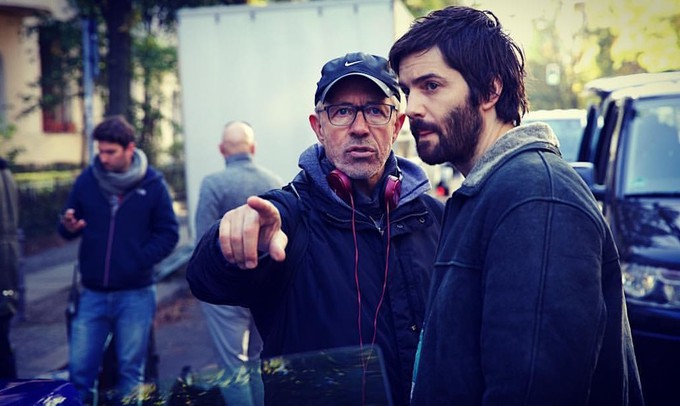
Sam: Peter, please give the readers a brief synopsis of the BERLIN RIDE, one of ten short films featured in the full-length cinema BERLIN, I LOVE YOU?
Peter: It’s the story of a man who goes to Berlin to drink himself to death while trying to commit suicide, but falls in love with a car that saves his life.
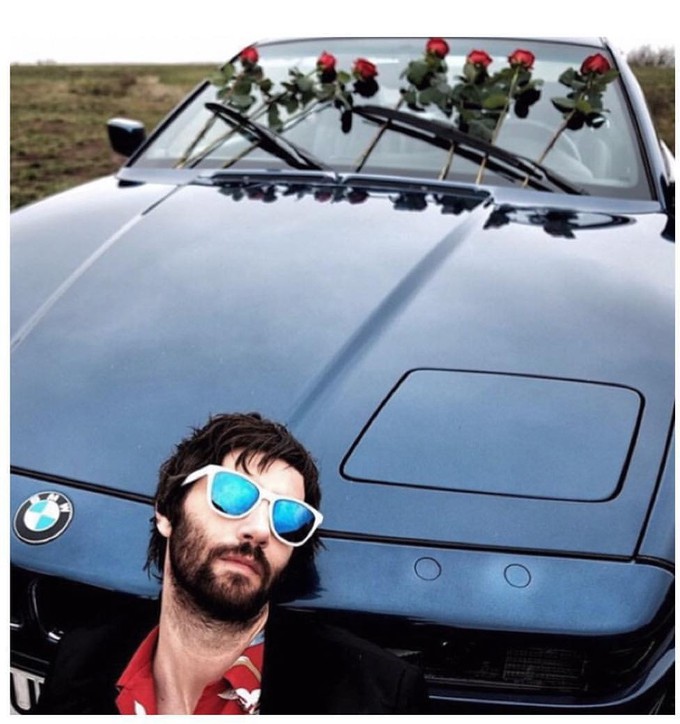
Sam: How were you selected to direct this film and what attracted you to this story?
Peter Chelsom: In the film industry, I’m one of those so-called, “international directors,” meaning I work in various places. I have dual citizenship in the U.K. and America. I spent a lot of time in Berlin making a film. Over a four-month period, I came to know a lot of the people there.
Possibly because of the status of my career, what often happens is people assume, “Oh, he’d never do it.” I hear those words all the time. Kolja Brandt, who I worked with on HECTOR AND THE SEARCH FOR HAPPINESS(2014), invited me to work on the project. When he asked I replied, “Of course.” The project happened to fit in perfectly with my schedule. I read the script written by David Vernon and it was good, but I developed it further.
I did two things to the script. First I made the central character a photographer. Selfishly, because I’ve been a photographer all of my life and I thought, “This is great. I can do all the stills and finally become fucking Cartier-Bresson!” Understand I am the kid who was obsessed with Henri Cartier-Bresson (famous photographer) pictures since I was 14 years old. I thought this opportunity would be beautiful; just me and a camera walking around Berlin with a mission. No crew, no studio, it would be lovely.
The second thing I did was ask myself, “What is this about?” You lose sight of that after you’ve written a script and crossover into the madness and chaos of production. I made the decision that it was about the time in someone’s life when they die and become regenerated. Inspiration was to be the barometer of the main character’s state. His photography was the measure of that. I know this personally, because as a creative individual when I’m taking pictures it’s a good sign. If I’m not taking pictures, then I’m probably a bit depressed and I need to do something.
BMW sponsored the film, knowing that this was going to be a story that featured a BMW. I’ve been a writer/director for a very long time, but I’ve always done commercials because I like it. Commercials are what I call a director’s gym, where I can remain fit at my craft while working on set working with new toys. It has afforded me an opportunity to work with the best VP’s in the world. It’s not my life but I love doing it. Completing BERLIN RIDE was of those occasions where there was a conflict of intentions because the more I featured and romanticized the car, the more it served my story. BMW couldn’t believe it. Normally, the brand says we want more and the filmmaker says you’ve already got too much. However during the process, never did I think about branding the car. I just thought I know what I’m doing and I trust that what I’m doing will give BMW everything they need.
Sam: It’s interesting that you mentioned your first short film, TREACLE because it was completed in Germany in 1988. Fast forward 30 years later and you’re doing another short film in Germany that introduced you into this career. Did you ever feel that completing BERLIN RIDE brought your career full circle?
Peter: That is a very good question. TREACLE was a black and white film that it won a BAFTA nomination and started my career. I never realized there was a circle taking place when I did BERLIN RIDE. I mean BERLIN RIDE is an 11-minute movie made 30-years later after I made my initial 11-minute short film TREACLE.
It was interesting because I felt as liberated again. No one told me what to do. I realized that even though you think you’re not shooting a film to please the studio, you have always got that filter. Even if you think you don’t, you have got weight on your shoulder; you second guess the result, you think about the first test screening and you occasionally play it safe. Therefore, it was liberating to feel, for want of a better expression, “European again” doing my thing.
People who know me and have seen BERLIN RIDE have told me, “Oh my God, it’s you back to your thing. Isn’t it? But evolved.” Those words are nice to hear because it was the freedom and the capacity to be abstract! There was even what I call, “expression through compression” a short story that stretches further and you want to know more of. I really love that.
One of my early prominent films that I wrote, produced and directed is a very personal story called, FUNNY BONES(1995). The film has a cult following and was re-released last year by Keno Lorber.
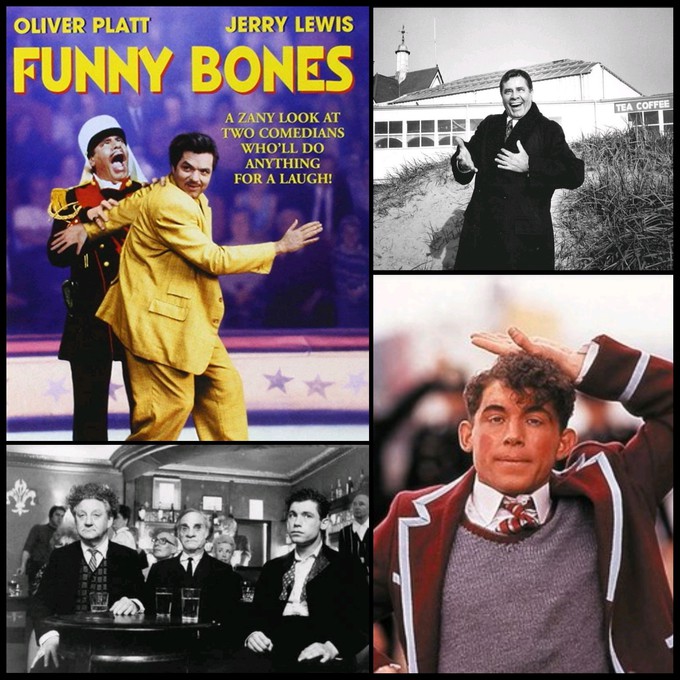
Peter: FUNNY BONES is set in my hometown and it is about comedy. The film is flawed, it’s weird but there is nothing else like it out there. Before the re-release took place on Blu-ray, I was asked me to do a director’s commentary. I ended up studying my own film that I hadn’t seen in years. While watching the film I was consumed with two thoughts of, “What the fuck was I smoking?” The second thought, “Where can I get some more of that shit?” I mention all of this because it’s a part of that feeling of coming “full circle,” also it was a part of my own regeneration. Not that I ever went down, but I’ve had a weird career and making BERLIN RIDE reminded me of who I was. It reminded me that when I do my thing and when I’m allowed to do my thing and I am liberated, then the work is better. That’s what completing this film represented to me.
Sam: Your resume as a full-length director speaks for itself. You’ve done HEAR MY SONG(1991), SERENDIPTY(2001), SHALL WE DANCE(2004), THE SPACE BETWEEN US(2017), and many more. Is your approach for directing a short-film different that your approach for directing a full-length cinema?
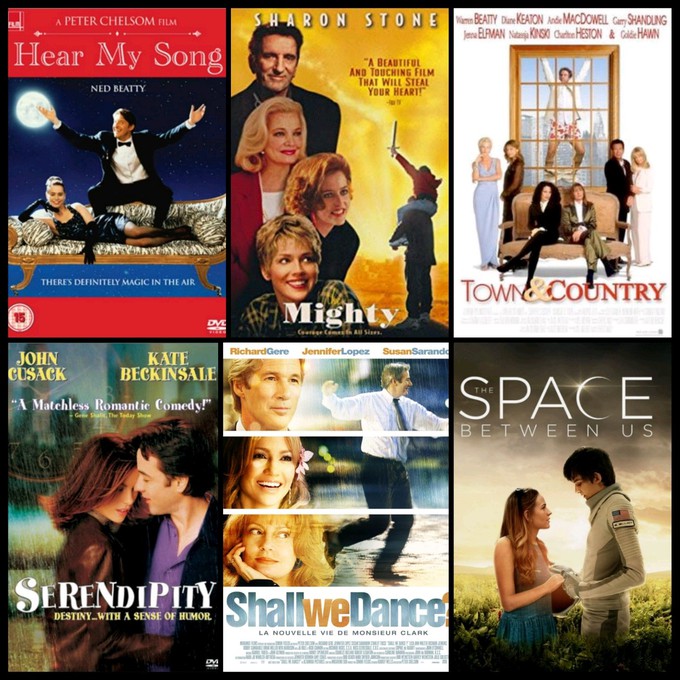
Peter: Honestly, I think it is a microcosm. I didn’t have many days to film so I had to be prepared. I do a lot of what I call, “preparing to be unprepared.” Especially with actors and performances, you have to a very solid base, from which you play. I have a very boring respectable British theater background. I was an actor until the age of 30. I played leading roles at the Royal Shakespeare Company, the Royal National Theater, and the Royal Court. Having said that, I’m not a purist; I prep, but I don’t over-rehearse. I like having a set where I can be surprised.
What I am trying to say is the process is exactly the same, but compressed, compressed, compressed. Perhaps, even more so because of the short time period to shoot BERLIN RIDE. I had be more decisive and more prepped. I knew exactly when and where and what I was doing. I created a solid base but kept the process loose.
For example, the cameraman Kolja would ask me, “Mr. Chelsom, what are we doing today? Do you have a shot list?” I would say, “Yes.” Naturally, he would ask, “Can I see it?” And I would respond, “No.” He would look confused but I would then communicate, “Just hold the camera, Kolja. Your handheld work is superb. You’re a great photographer. You have wonderful framing. You have wonderful instincts. I’m going to rehearse this scene and put a shape on it to make it filmable. Then I want you to chase your instincts. If in the middle of someone talking you want to pan off the actors onto something or someone else, do it! Then work from the other side of the set and record it at another angle.”
From experience, I know that I’ll have something in the editing room that will work after two takes. Nothing is daunting to me anymore and I don’t mean that arrogantly. “Daunting” is the career, raising the money and all that; which can be horrible. I’ve gotten to the point now where I like to be surprised more. Actors will often ask me, “Do you have notes?” Once again I will respond, “Yes, I have lots but I don’t want to give them to you. You’re in the right place. You’re in the right zone. Please just play…please just play.” It makes for something warm and authentic to happen for both the crew and the cast, but you have to start with a solid base.
Sam: You’ve kind of already answered this earlier, but to elaborate was adding the photography element to BERLIN RIDE was that vision of the writer or you as the director?
Peter: It was me. Yes, it was the first thought I had when I read the script. The script was always good, don’t get me wrong. But I saw it as a chance for something I’ve always wanted to do for a very long time.
I’ve known the filmmaker Alfonso Cuarón for what seems like forever and his work is like moving photographs. Alfonso is such an outstanding photographer and when you look at his work, especially ROMA there isn’t a frame that wouldn’t make a great still.
Now please excuse this brief tangent, before I draw back to my point. It’s not just about still photography that is justified, it’s the power of photography. As a photographer, I feel I have to ask myself, “What is the inescapable quality of the still photograph of this scene before anyone has gone to work?” This concept is true of casting as well.
In other words, when I did FUNNY BONES it was filled with a lot of non-actors and outsider riddler jugglers and comedians. It was insane. The crew used to call it, “The mad sad uninsurable world of Peter Chelsom.” I was casting people for their innate quality regardless of their acting. Despite all of my boringly respectable theater background, I know that none of that matters sometimes. I cast people for reasons that I wouldn’t dare tell them. Had I been truthful I would have told some of the actors, “I’m casting you because however hard you may act, the thing that audiences are going to notice most, the thing that is going to win…is your depressed rubbery faces.”
The photographs in BERLIN, I LOVE YOU are real people and there is something about that. Honestly, photography is this fucking thing to me. I’m literally looking at the camera that my dad bought me when I was 13 years old.
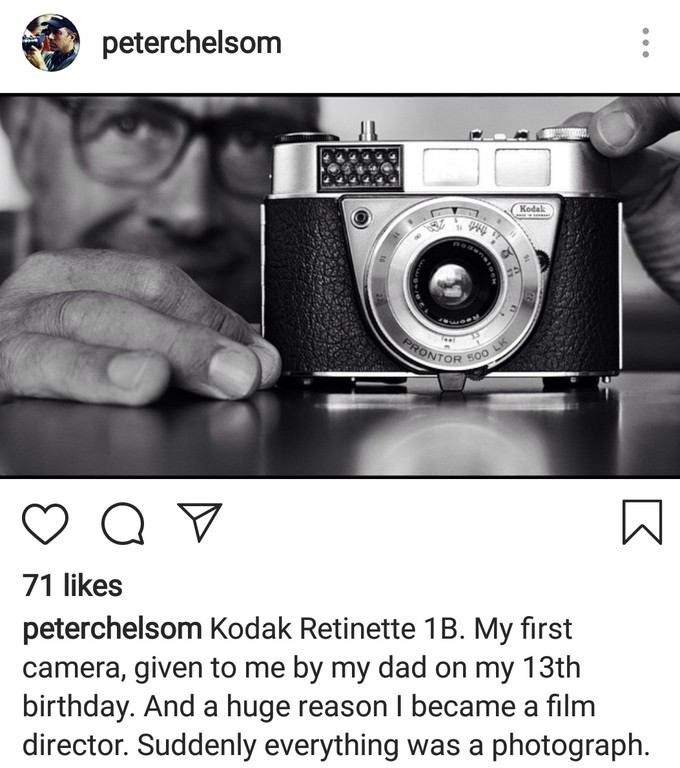
He died about a month after that and I felt there was a legacy in it, an obligation to use it. I know that’s where it started. Photography is everything! I can’t always do it, but the best part of me would like to work exactly the way Alfonso worked in ROMA. His photographic element with a film captures the essence of making the viewer do the work somehow where it doesn’t beg you to be moved, it lets you be moved.
Sam: How much time did you spend in Berlin gathering photos?
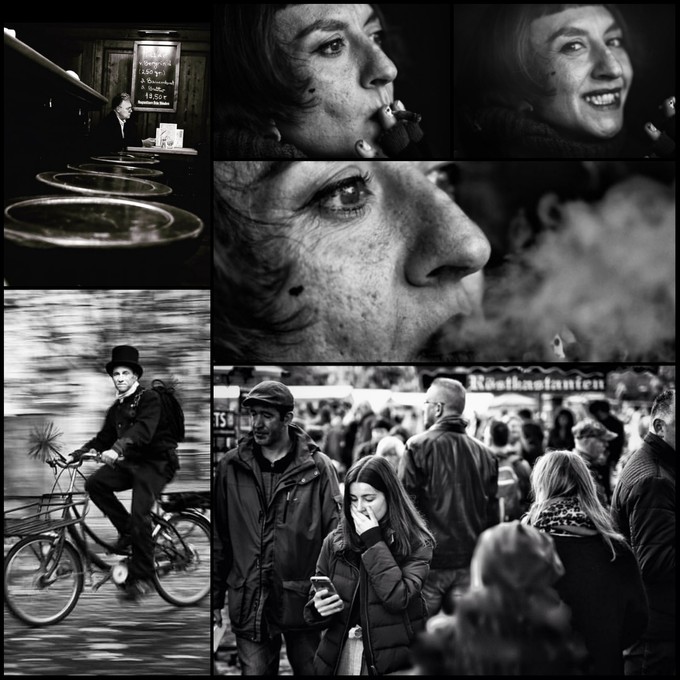
It was a brief period of four days. There were times where people were very willing. Sometimes, people didn't know they were being photographed. Sometimes the photos were staged.
In fact, I was at Mauerpark while the film crew was recording another film in the distance. While I was there I noticed a girl whose face I found extraordinary and I wanted to photograph. I hadn’t yet started to record my film and what I realized as I noticed this young lady, was that the soon to be ex-wife of Jim Sturgess’ character, was written only to be a voice on the phone. I said, "No" to that idea because I wanted to make her real and personify her. I decided to do that through still photographs that would keep coming up on Jim’s computer and pained him to look at. Therefore, I was looking for someone to play what would've become his ex-wife. So I spotted this girl and approached her to ask for a photo. She initially said "No." I felt really embarrassed but I decided to send in a female producer Edda Reiser to ask again in hopes to reiterate that my request was real. She eventually agreed, despite being painfully shy and hating to have her photograph taken. Overall, the photography element was fun. I was in heaven.
Sam: As a music lover I am always curious about how the director feels watching their film without the musical score vs. with the musical score?
Peter: The film has to be working before the music. You cannot rely on music to save a scene. It should work without music and then the music should raise it up. Matthew Santos was the singer whose voice was used for BERLIN RIDE. I actually wanted to use a Matthew Santos song my last film THE SPACE BETWEEN US and he was considered to be too avant-garde. I didn't care though, I loved the guy. I actually found him singing “Don’t Look Back” on YouTube live and that is the score, done with two mics in a room somewhere.
The sound technicians naturally wanted re-record the song to create a distinct sound, but when they did the magic was gone. It sounded too produced and they tried a re-recording to which I said, "No." We ended up going back to the moment when Matt simply sang the song with his foot on a synthesizer. It was really unusual but because of my experience, I am able to take that risk on new people. I happen to love promoting people when they are great. But yes, you do have to be careful; the musical score is only there to help a film not save a film.
Sam: What is next for Peter Chelsom?
Peter: I am doing a long project. I've never done television until now and I'm in the deep end. There is a book called The Mirror Thief by Martin Seay and it is 600 hundred pages. The book is a very heavy read that requires a lot of focus, but it is the best writing I've read for as long as I can remember. Martin Seay is a genius! It has taken my co-writer and me, six months to put the novel into a 40-page bible for an 8-hour series. It's set in Venice, Italy in 1592...Venice Beach, CA in 1958 and The Venetian Casino, Las Vegas in 2003. I know you must be thinking, "How the fuck does this come together?" But trust me this story is beautiful, dark, and redemptive. The piece believes in alternate realities and it is incredible!
The very first meeting we did with Sonar, they wanted it. Sonar is a really great company and they commissioned getting us to write the pilot and now they are making their sales pitch. The process will be like making three films back-to-back. It is the most challenging thing I've ever done and God willing the best thing I've ever done.
I also want to make a film this year based on the novel Security written by an American novelist, Stephen Amidon. My co-writer, Tinker Lindsay and I are writing the adaptation. I hope to be shooting that film this year on the coast of Italy. Everything changes, but that’s the exciting stuff I am currently working on.
Sam: It is obvious that you have a sincere passion for photography. Why haven’t you presented your photography and work in an exhibit or consolidated into a coffee table book?
Peter: My eldest son Reggie has told me for years, "Dad you've got to do more with your photography." He insisted I start an Instagram account, which I have…
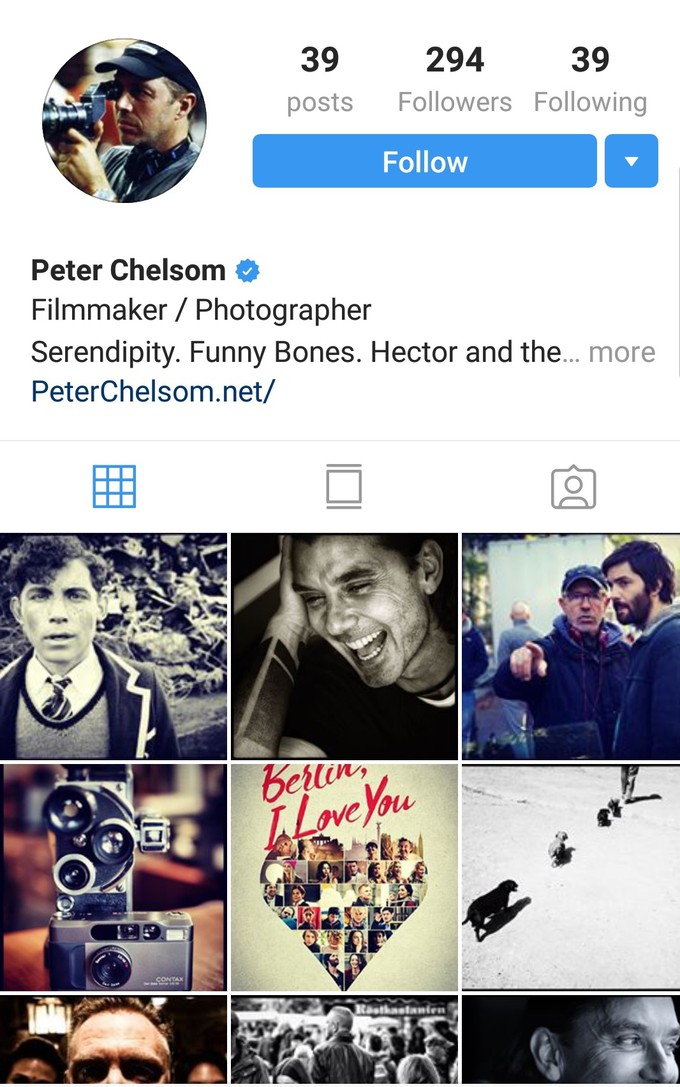
My son has truly inspired me and I am beginning to post my photos. I have every negative saved since I was the age of 14 years old. My photos include coverage of big stars that is valuable by virtue of it being…Warren Beatty sitting on a set…I mean I just have a lot of photographs. I am slowly feeding them out on my Instagram account to build a following. Eventually, I will work with my son to present to photobook publishers.
Sam: You've had a very long history in this industry. You've acted, directed, written, taught at Cornell University. Is there any part of the film industry you haven't worked in that you would like to conquer?
Peter: I know I have a very personal life story bubbling inside of me, about a little boy who takes pictures. The work would include my passion and love of photography. But it hasn’t developed yet.
Hmmm, I don’t want to go back to acting. The last job I ever did was at the age of 30 and I worked with Nigel Hawthorne. In the middle of filming with Nigel, he once told me, “You really should direct.” And I said, “Oh well thanks a fucking bunch.” He said, “No, no, no. Don’t take it that way. You’re a very good actor, but you have an overly developed third eye.” That was definitely a moment of epiphany because I realized, “Oh God, he’s right.” I noticed my work as an actor was too conscious. Actors often have a problem with that where they can’t lose themselves in the part and it shows in the performance.
The next time I saw Nigel was three years later. I was coming off stage at the British Evening Standard Film Awards, where I received Best Newcomer for my first feature that I wrote and directed. He’d come up to me and said, “I told you, you should direct.” It was a nice outcome. In answer to the acting, I was an o.k. actor.
In terms of writing and directing it is very challenging and you are the King. I don’t mean the term “king” grandly, but if you are looking to be the most stretched writing and directing is the proper fit.
What comes to mind is, I don’t care about status in anything. There are two types of ambition; ambition for status and ambition for the job in hand. I’ve always been ambitious for the job-in-hand and the byproduct is you have a career. I’m very bad at promoting myself. This is rare that I am putting myself out there, but my eldest son is pushing me and I enjoy it.
My point is this if there was a director that said, “Will you do a second unit for me?” I don’t care, I would be happy to do it. It doesn’t matter and people would be very surprised to hear me say that. In terms of other aspects of the business, I don’t think so.
Sam: That concludes my questions. Thank you for your time and I look forward to your future photography exhibition. I hope to see you do a segment on my favorite show CBS Sunday morning with my favorite correspondent Lee Cowan.
Peter: Thank you Sam, it has been a pleasure speaking with you.
